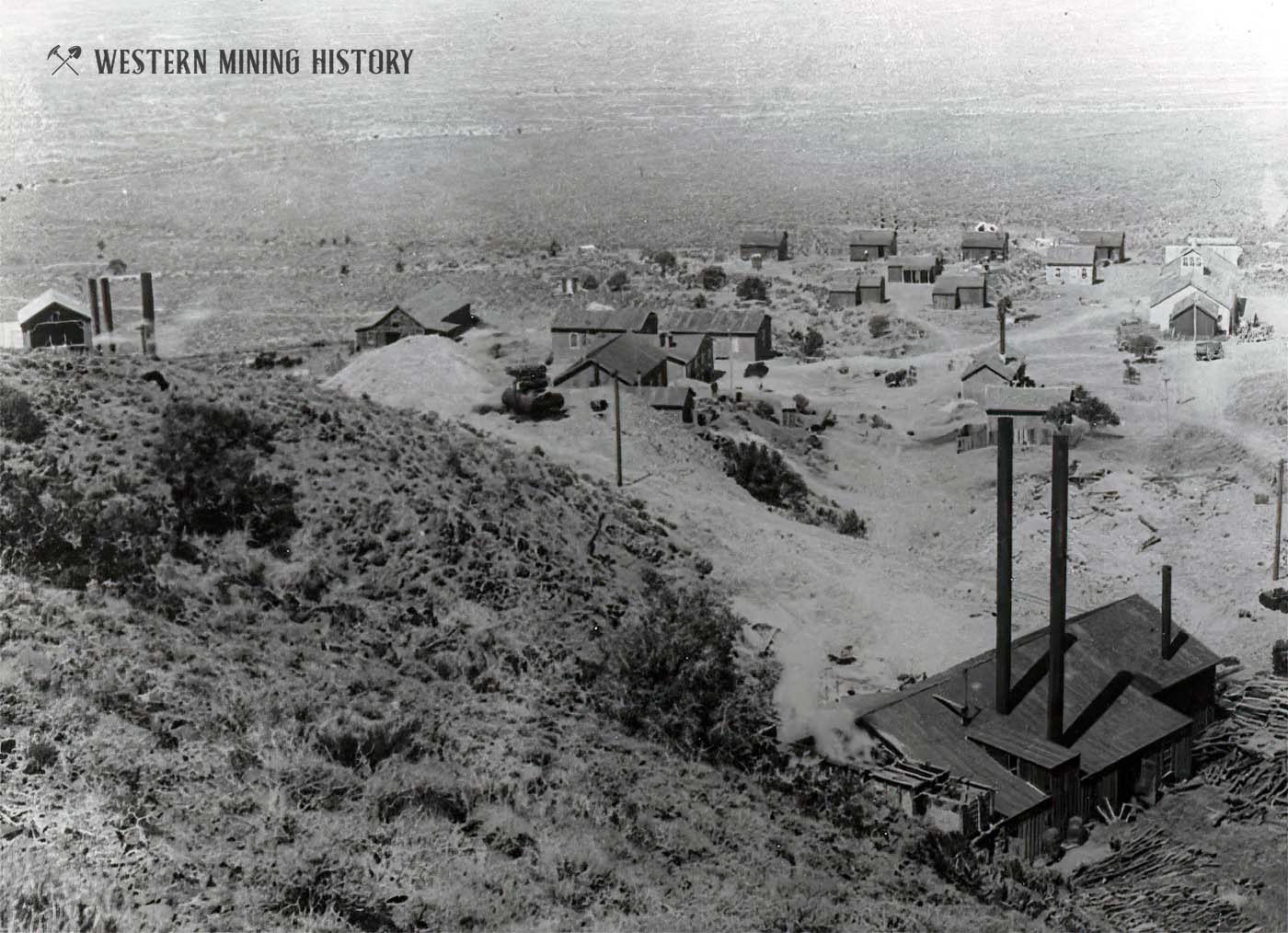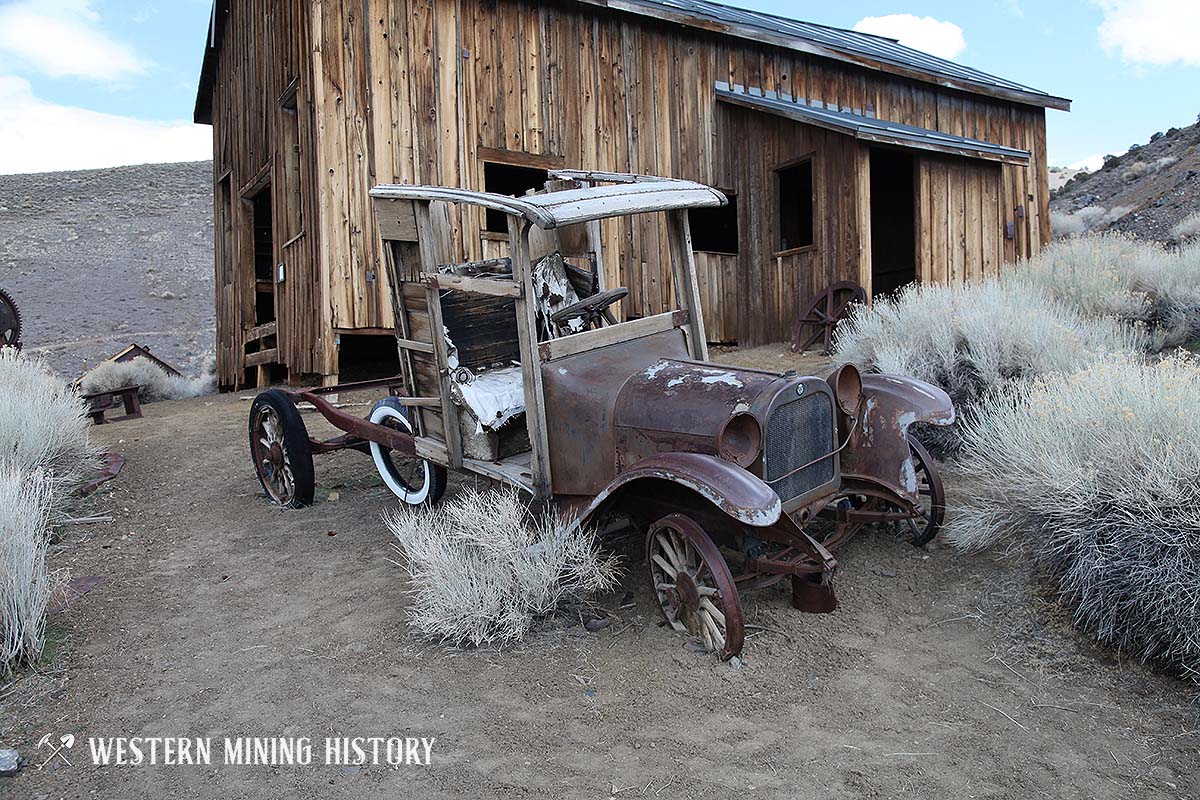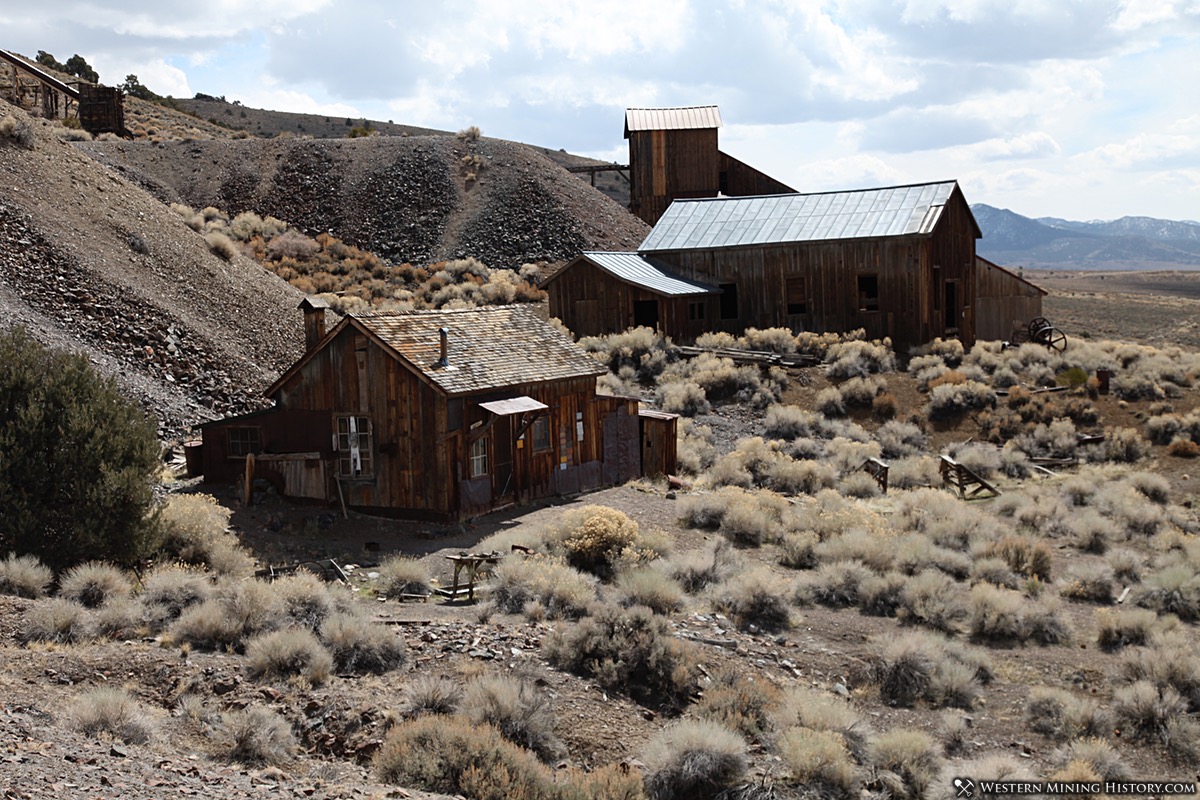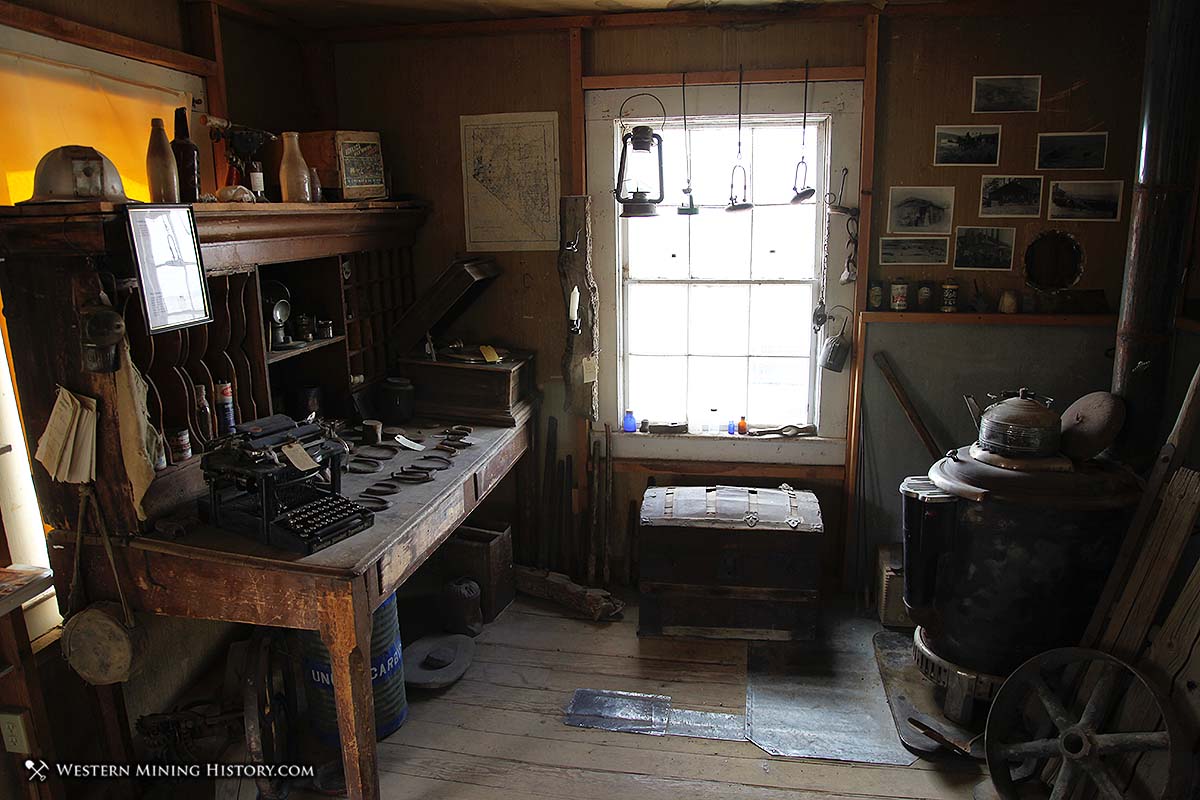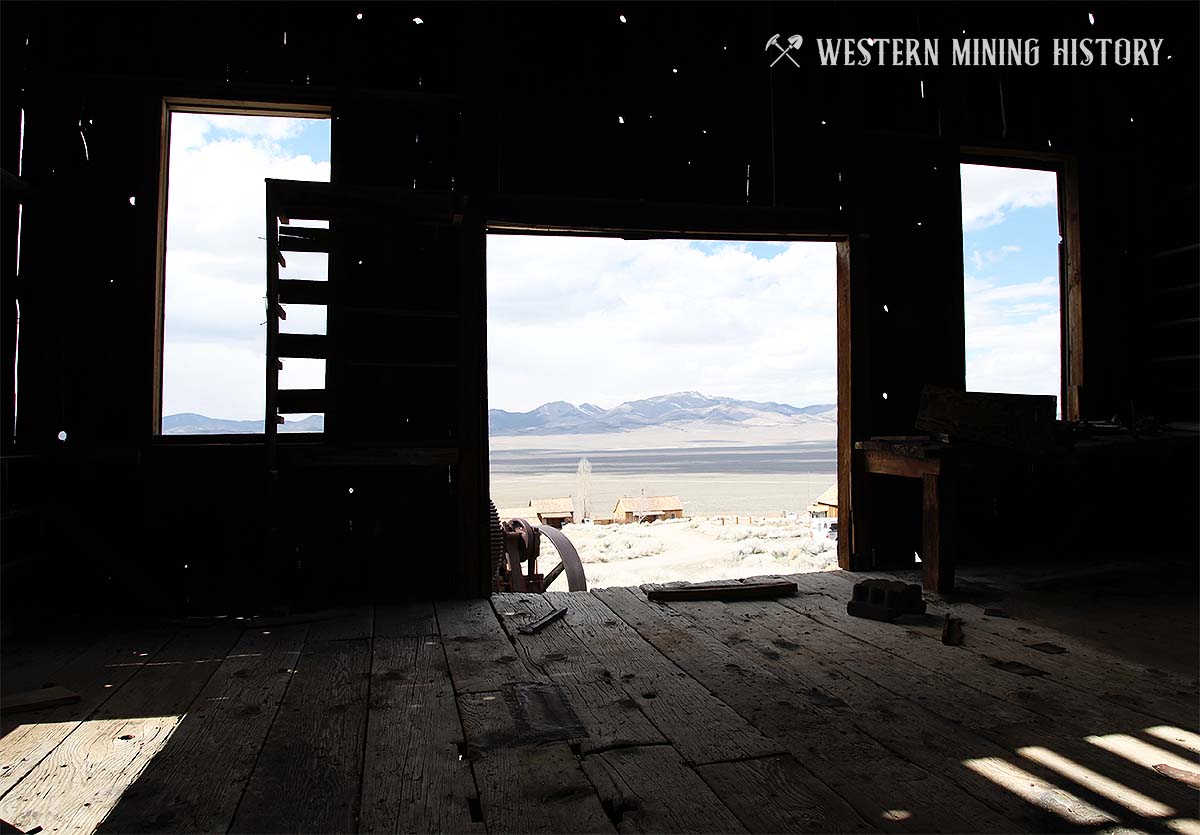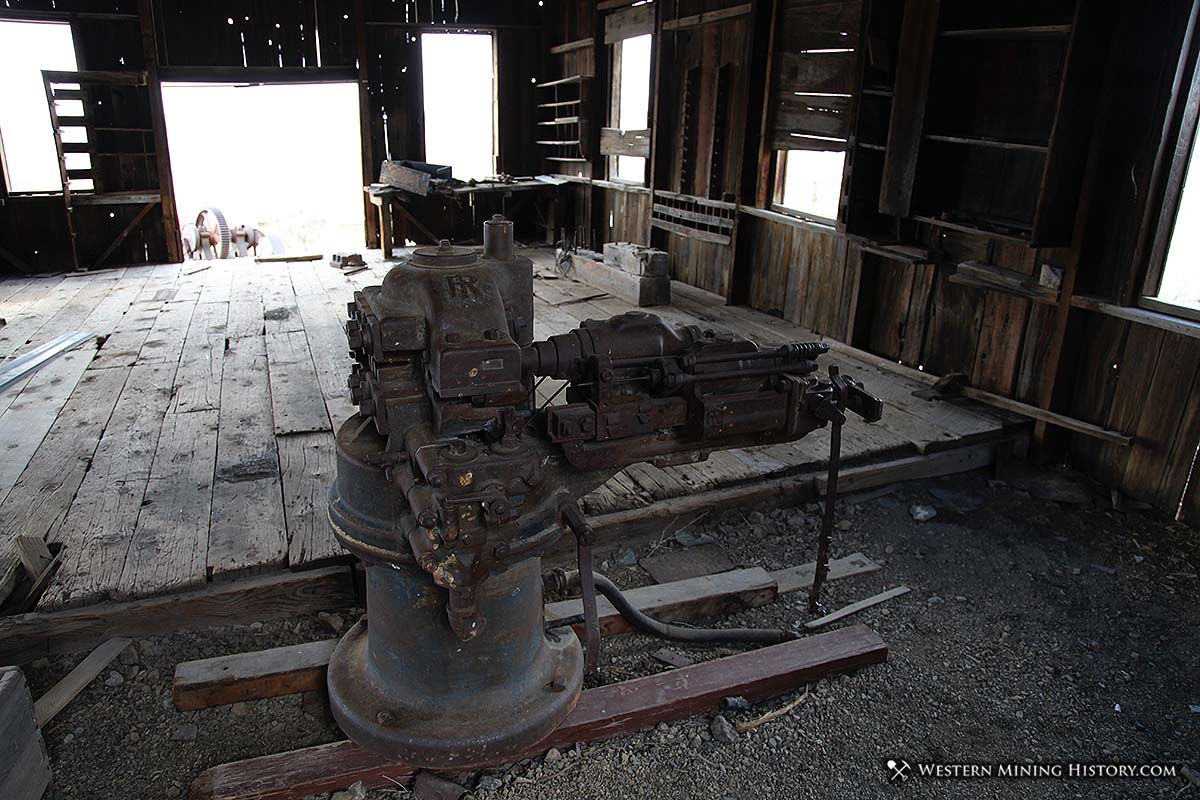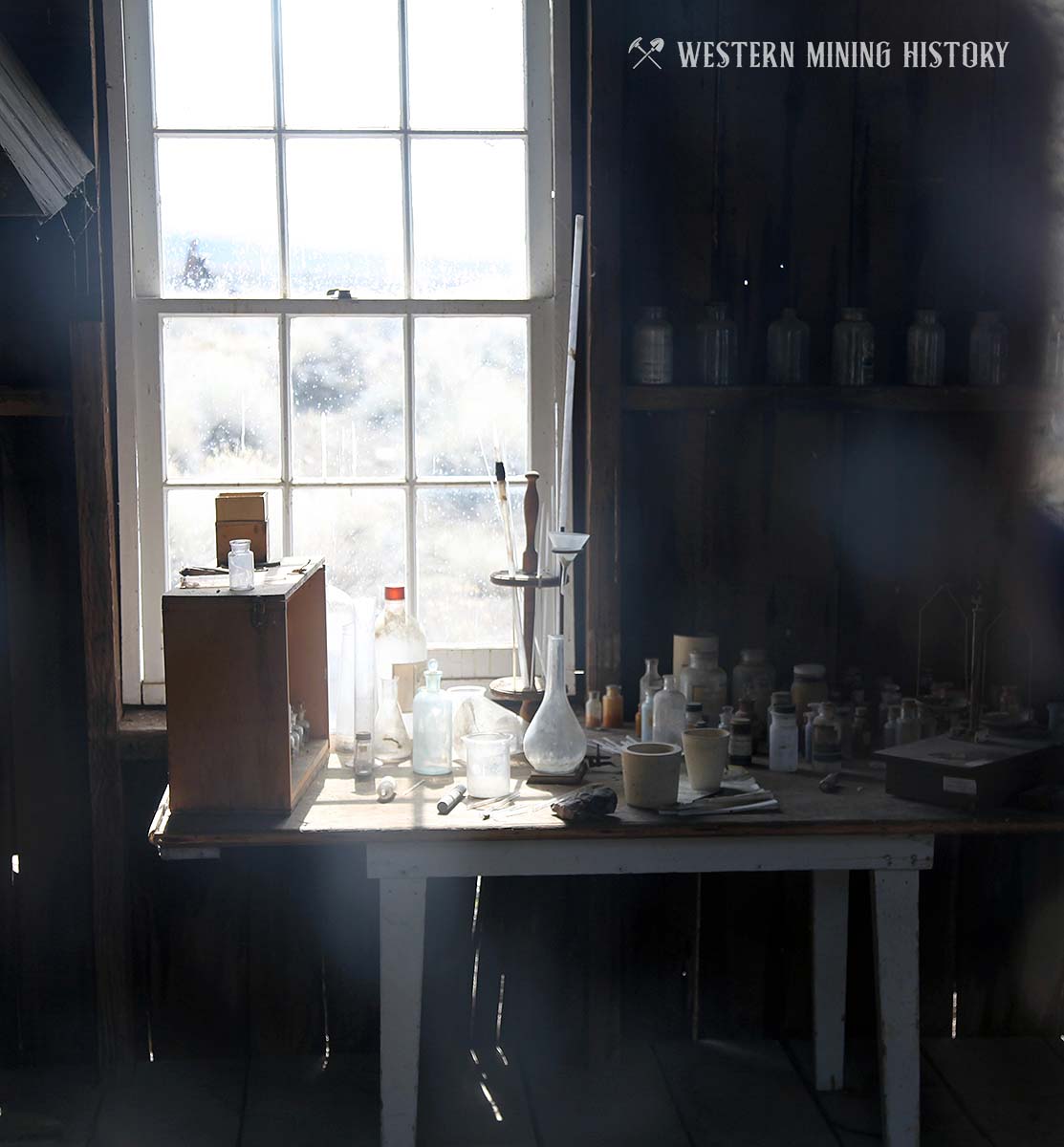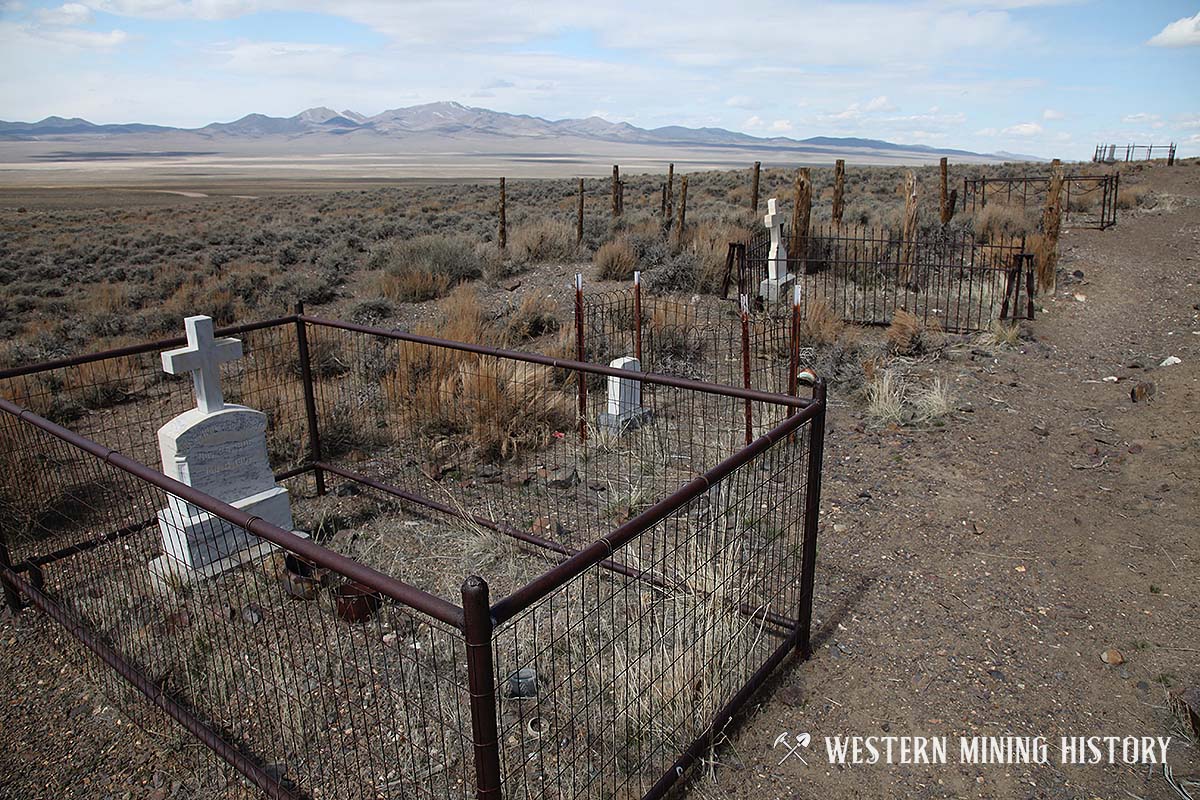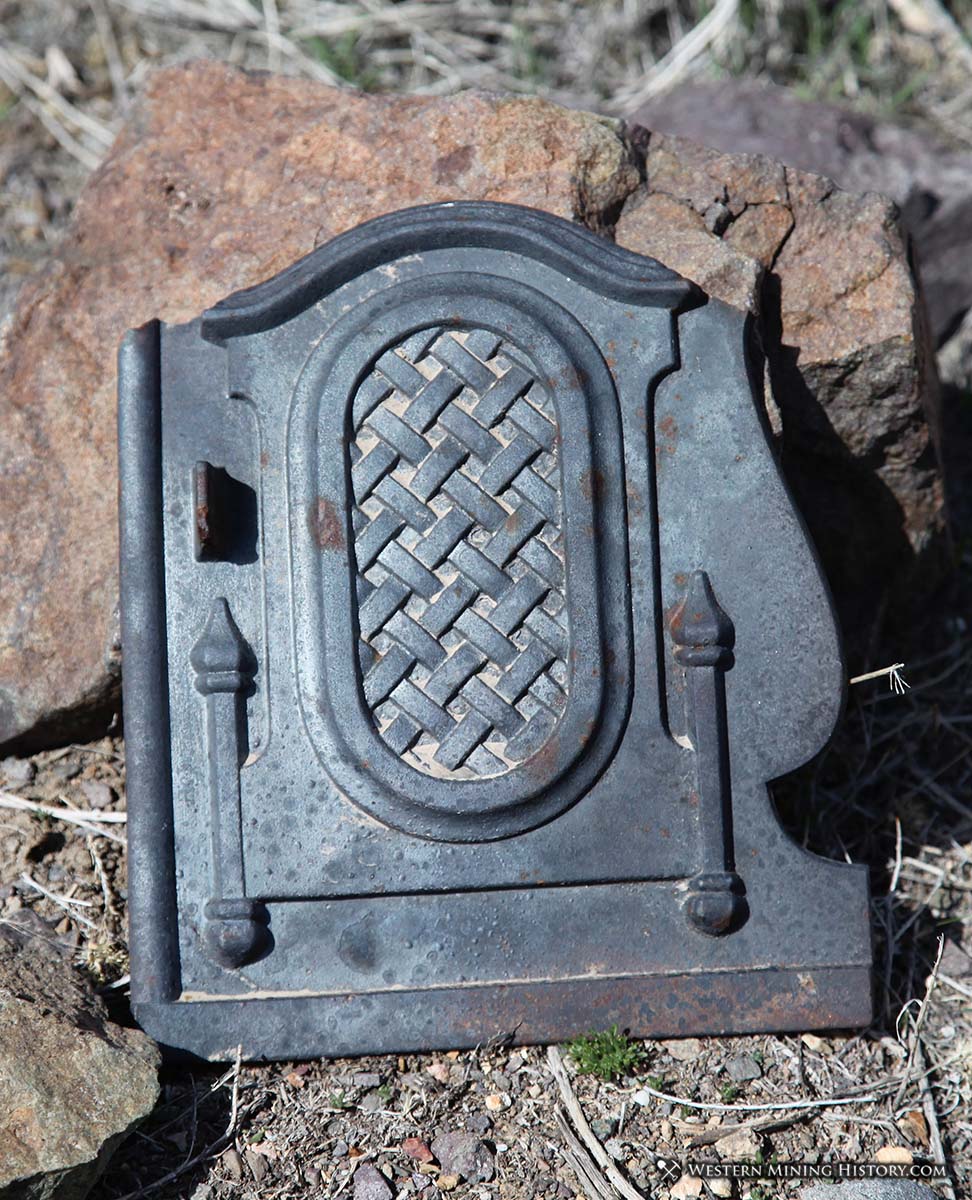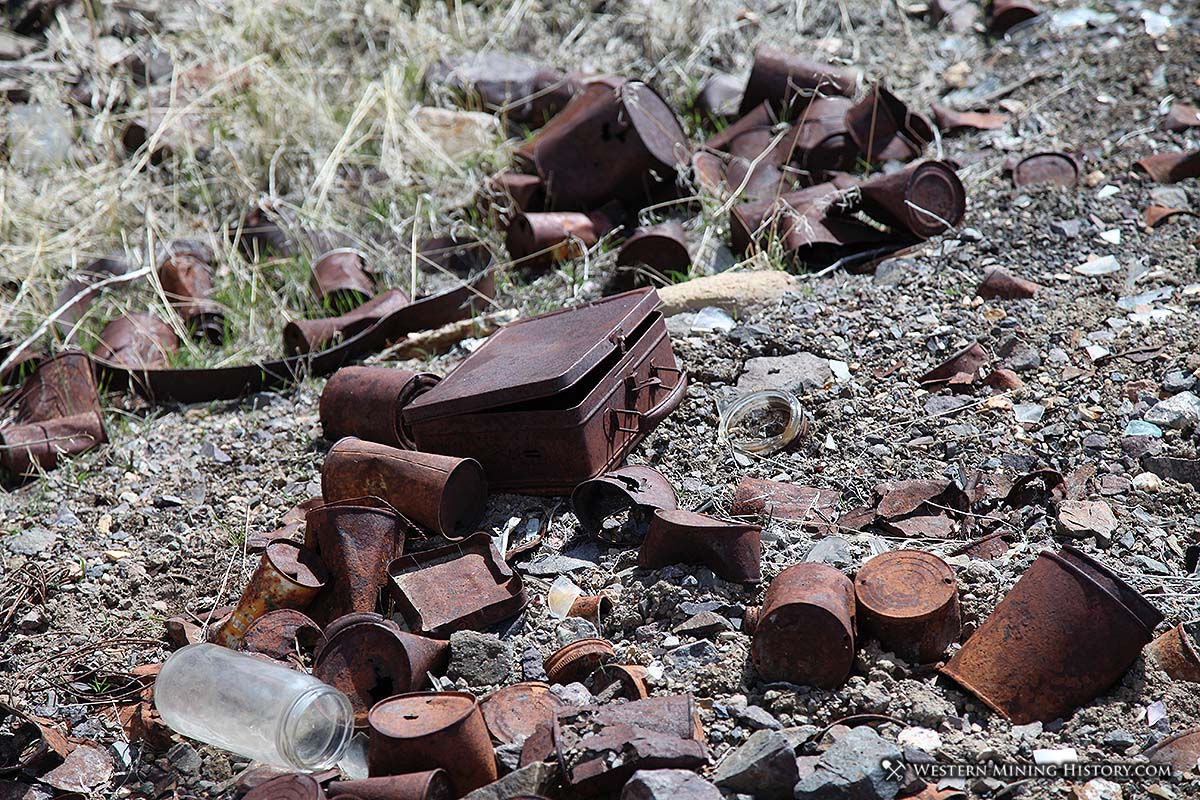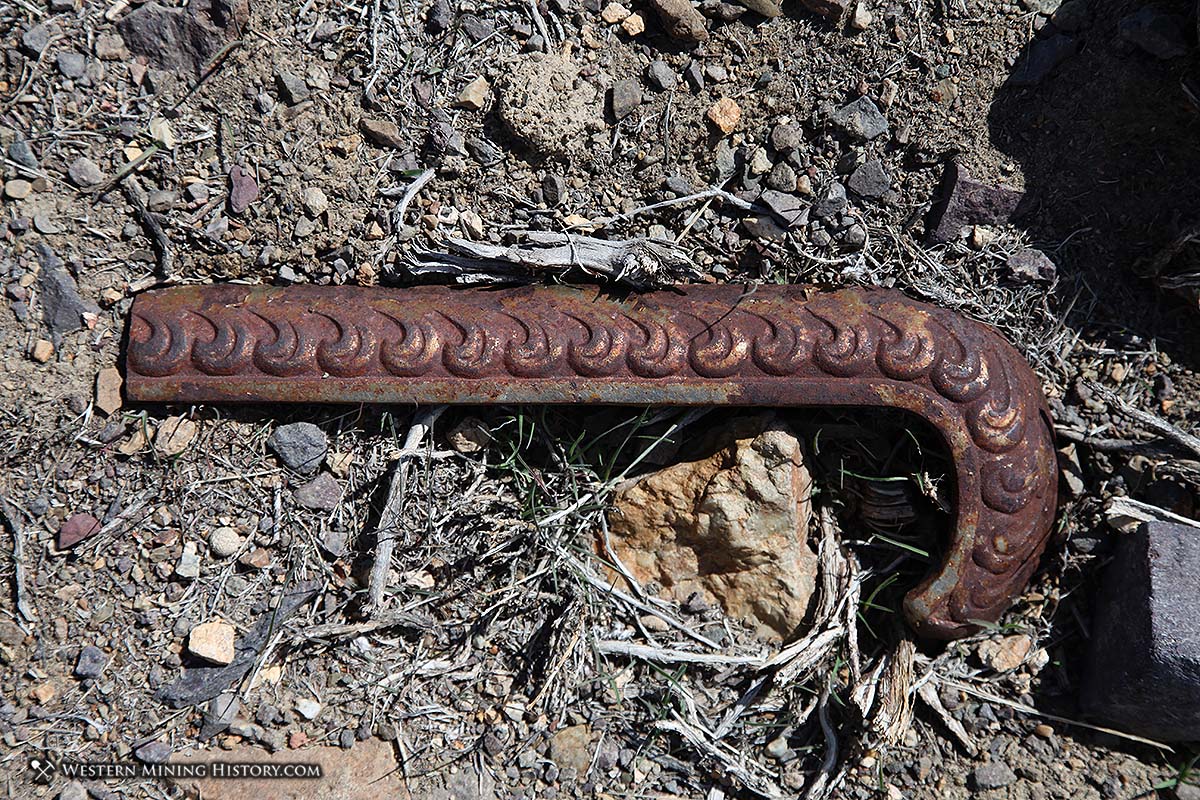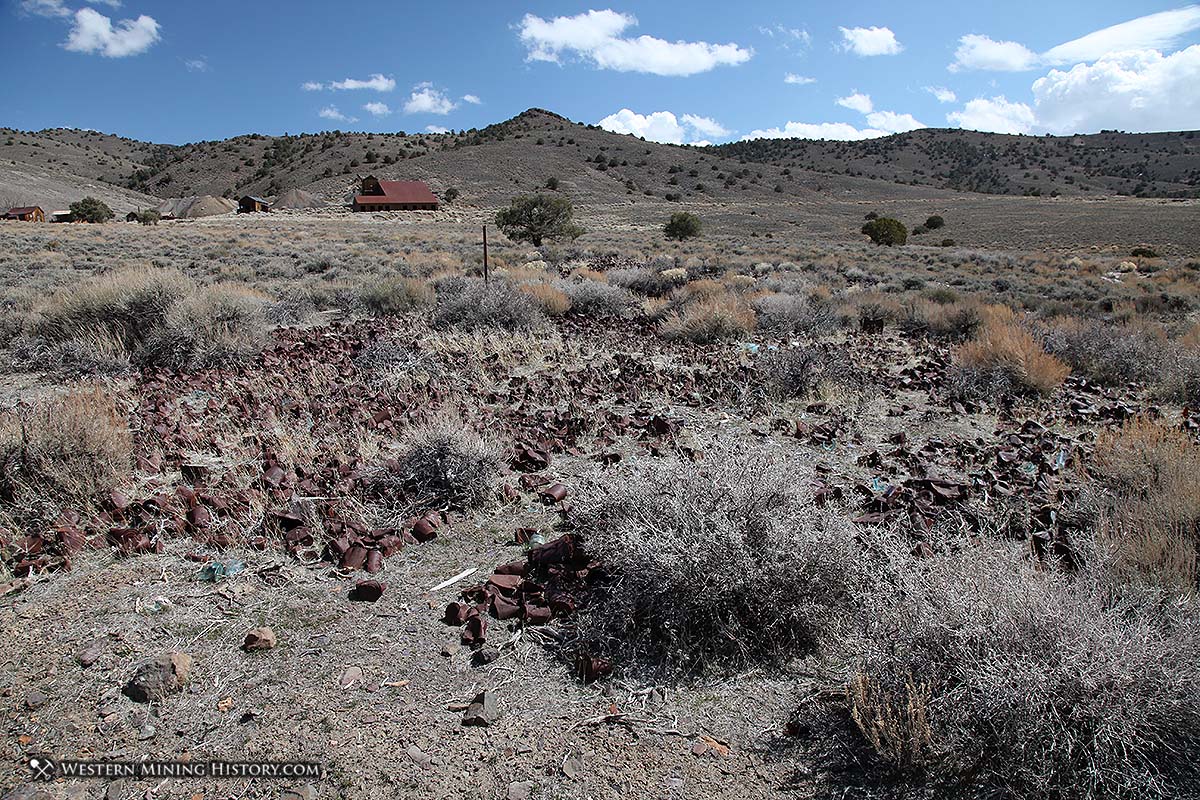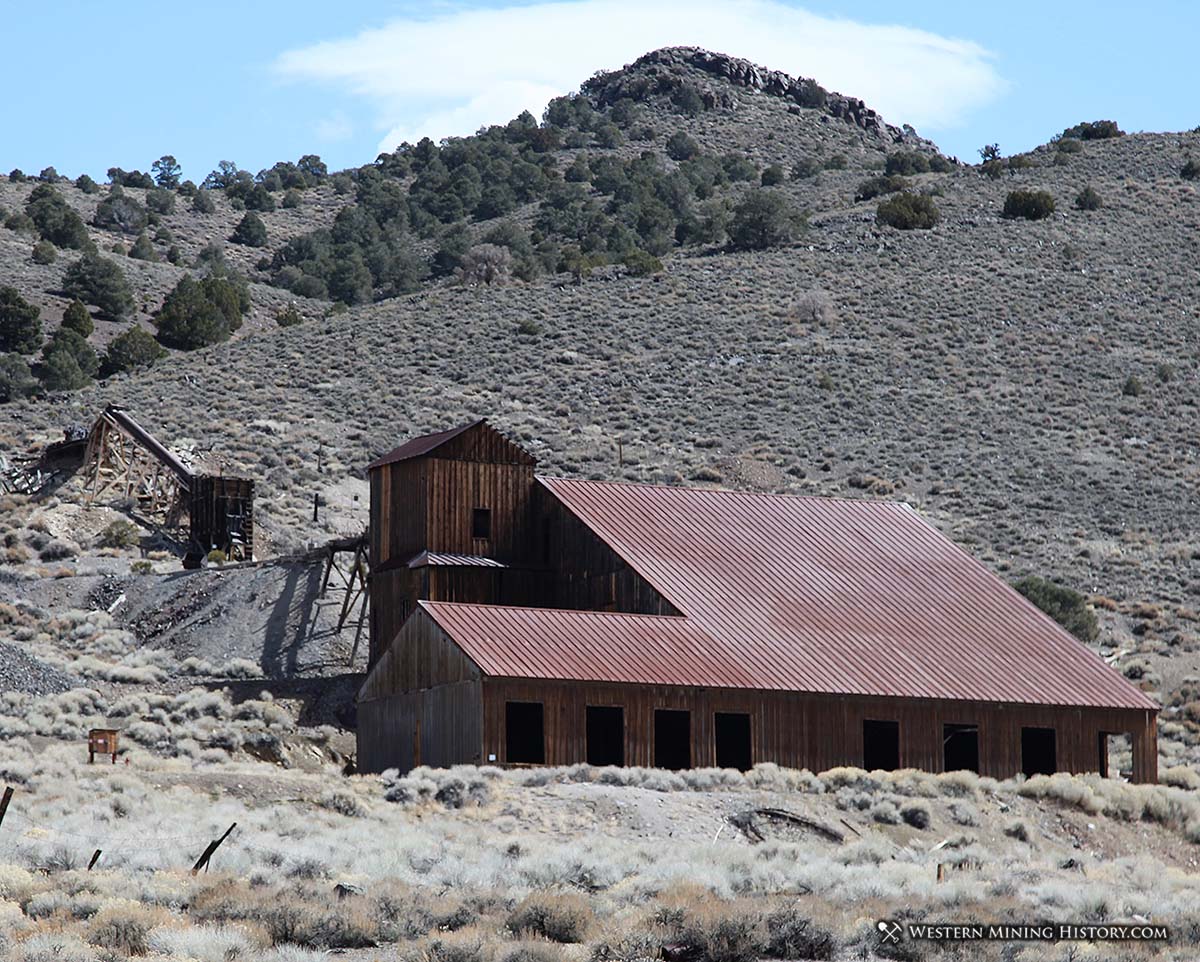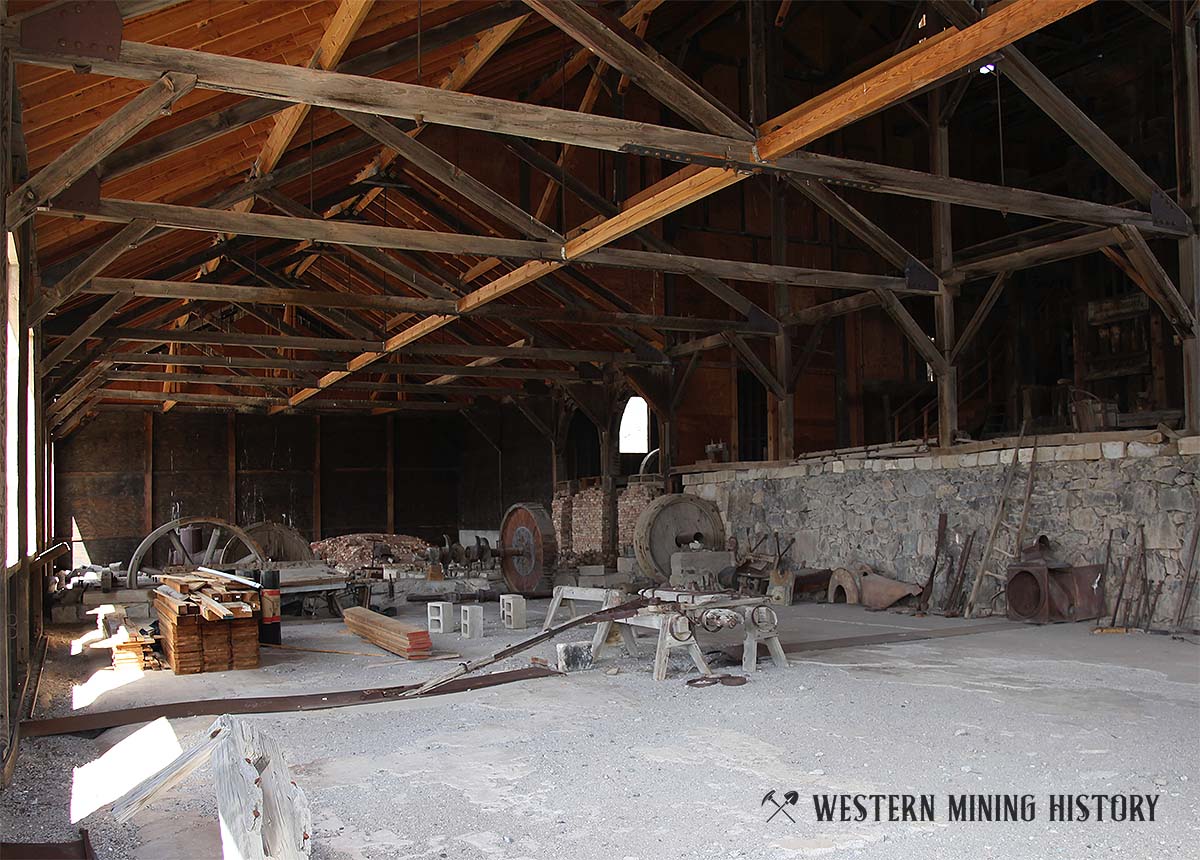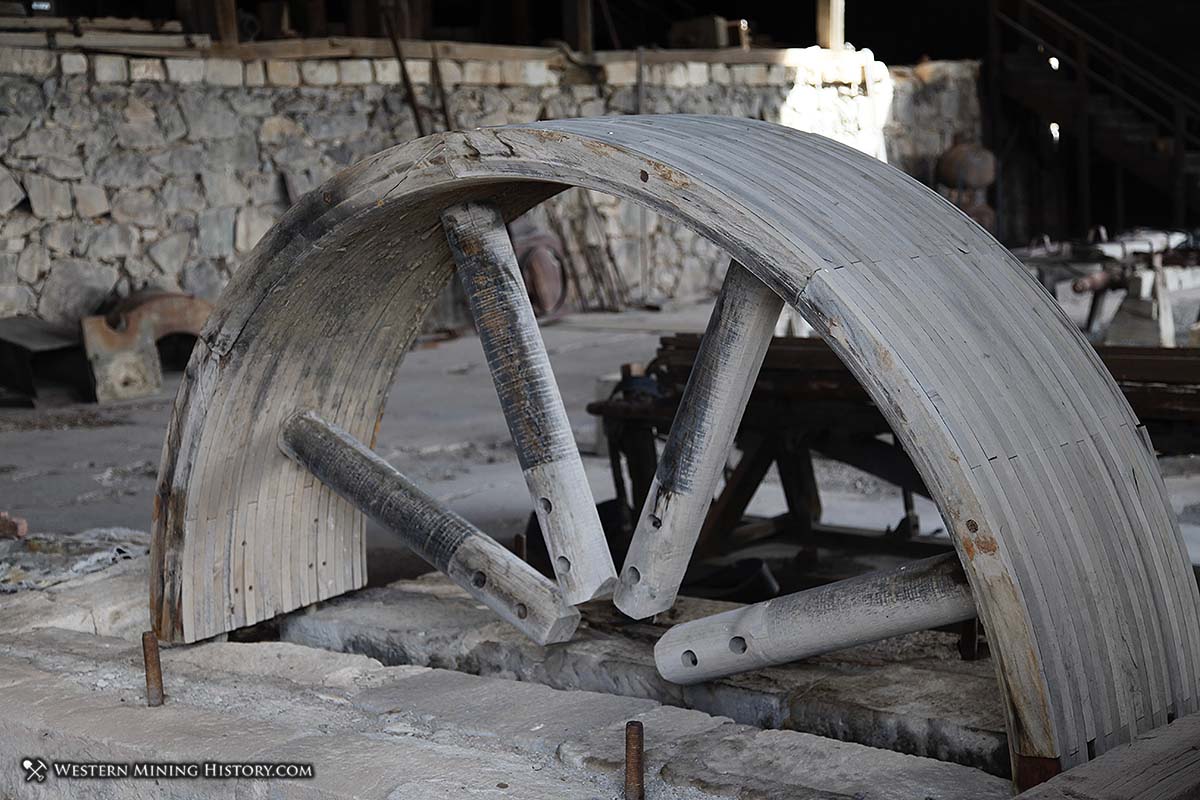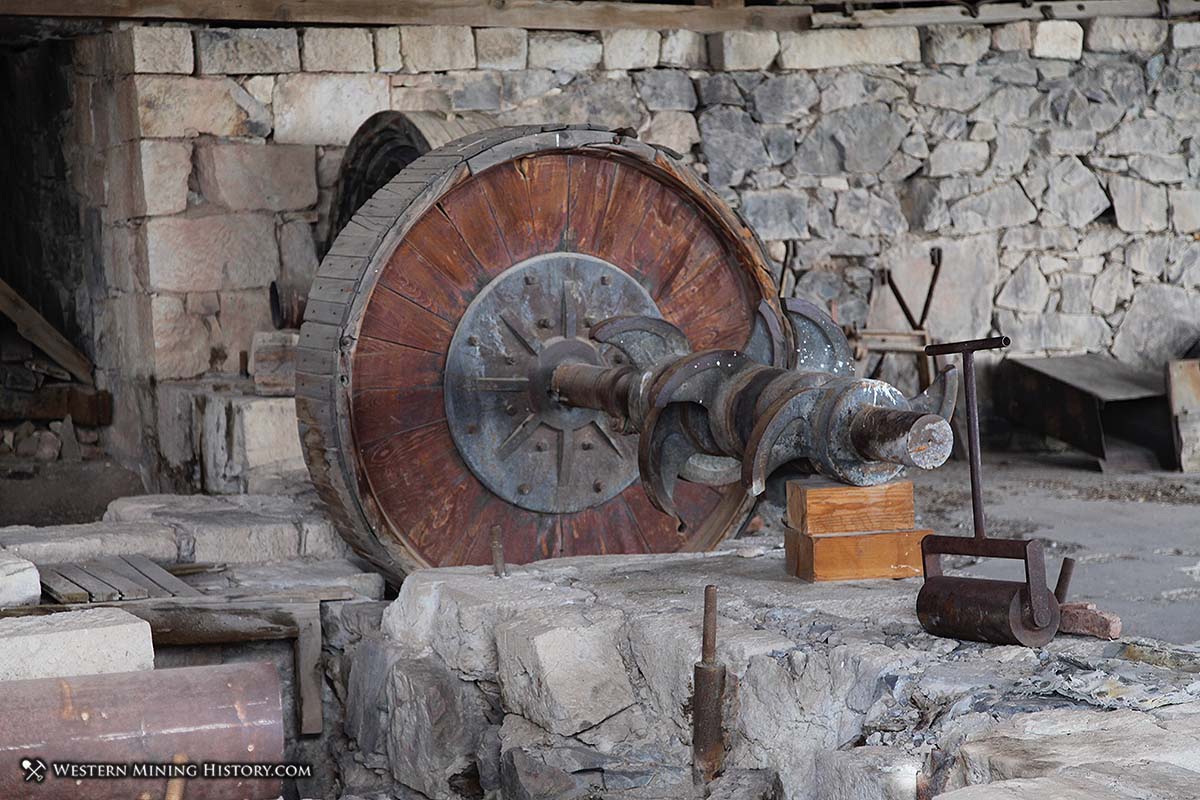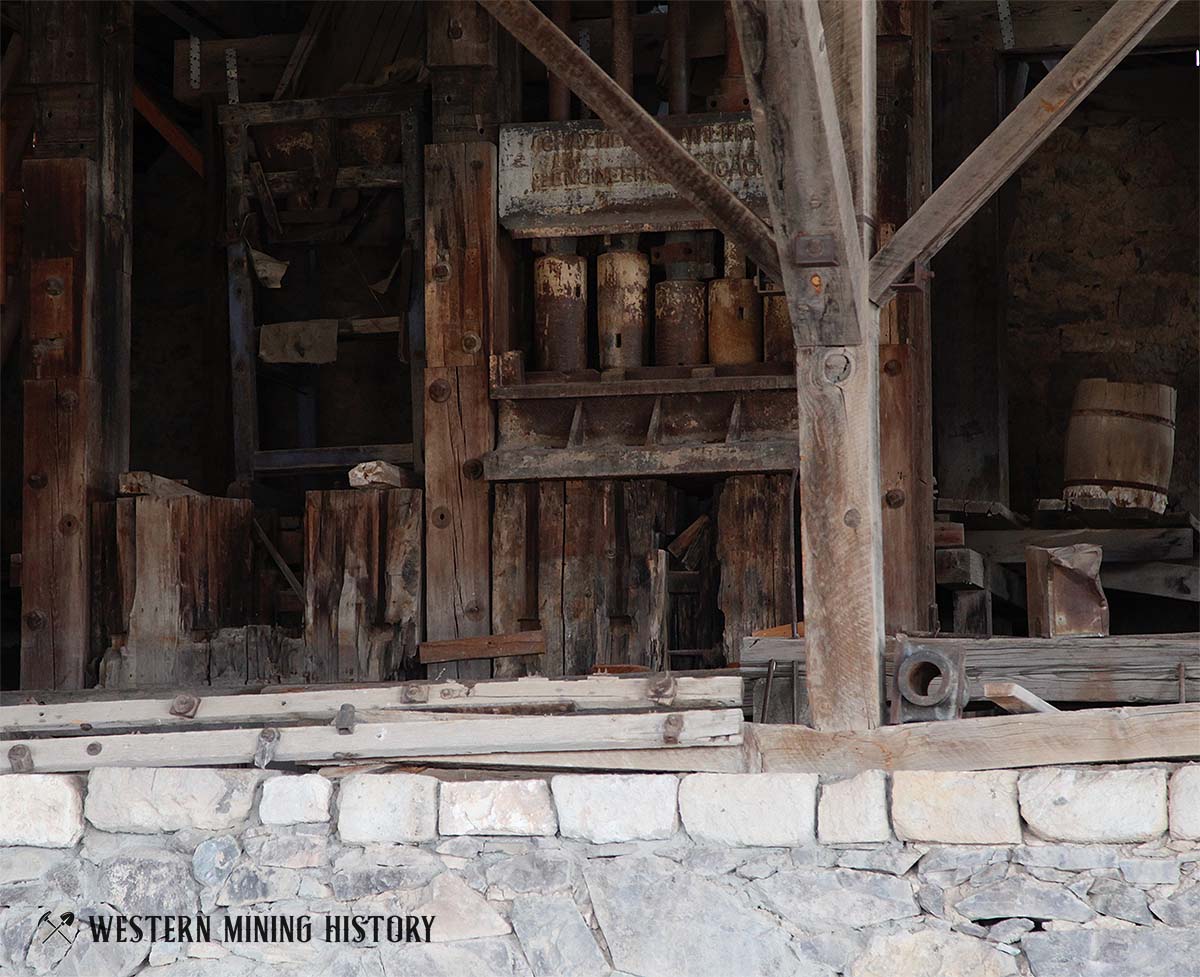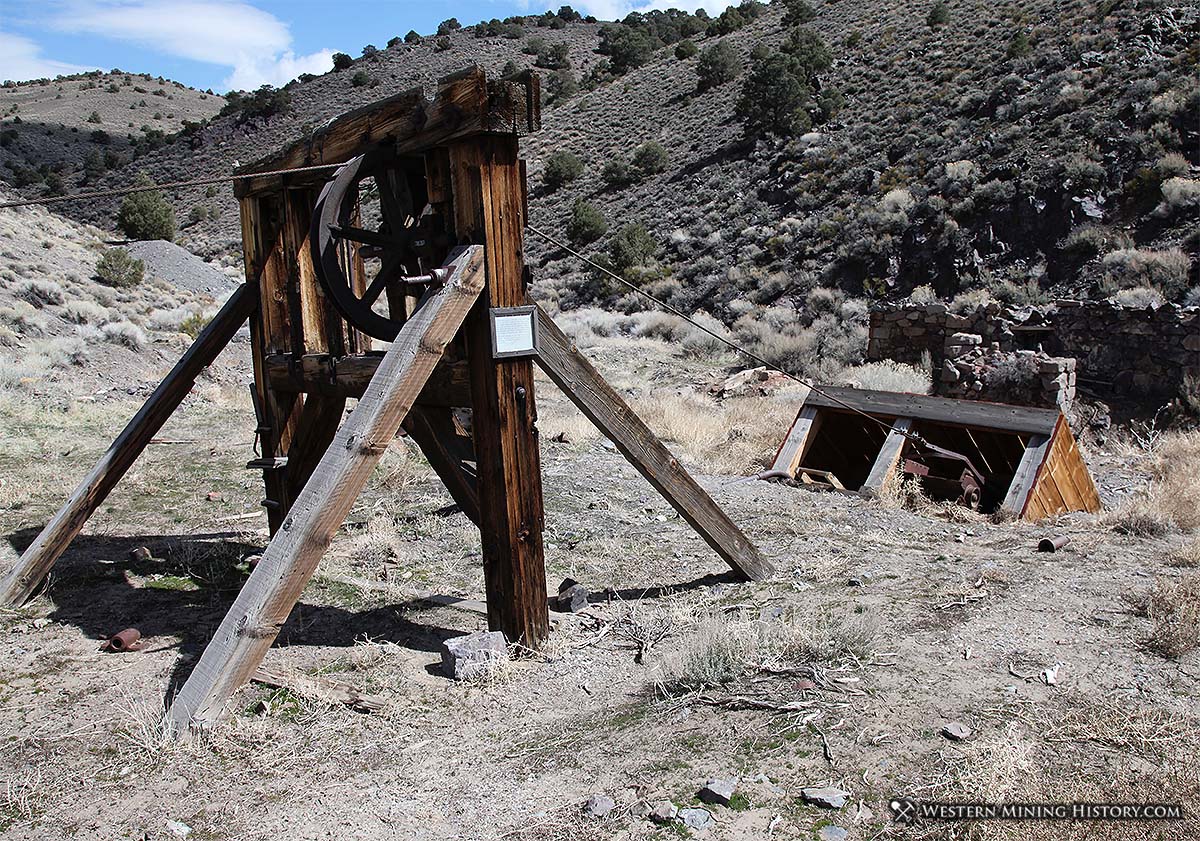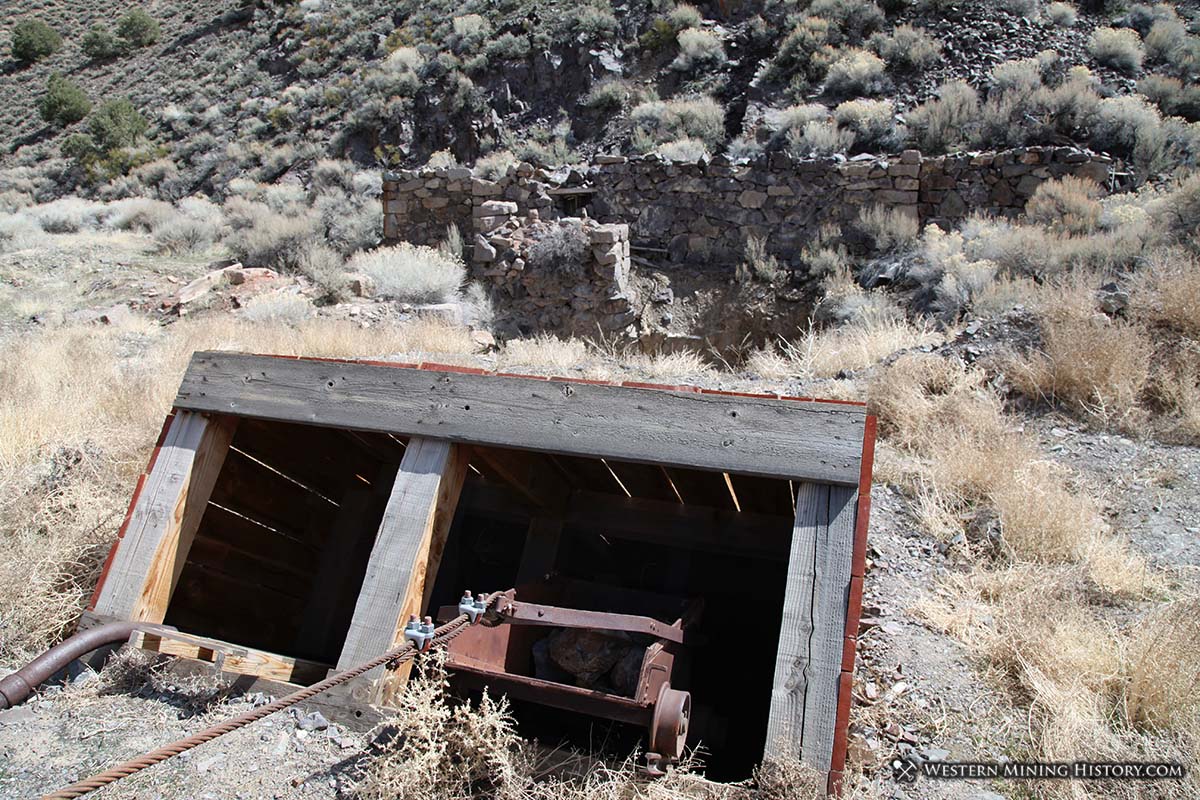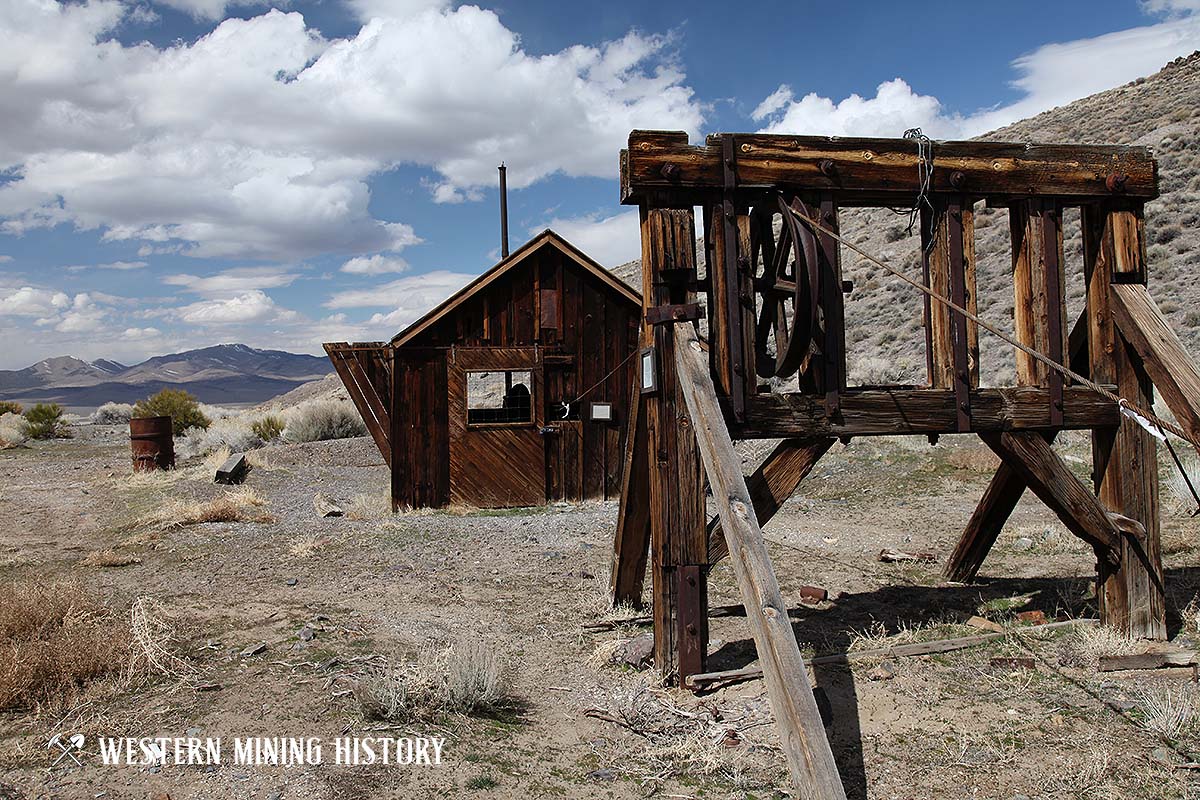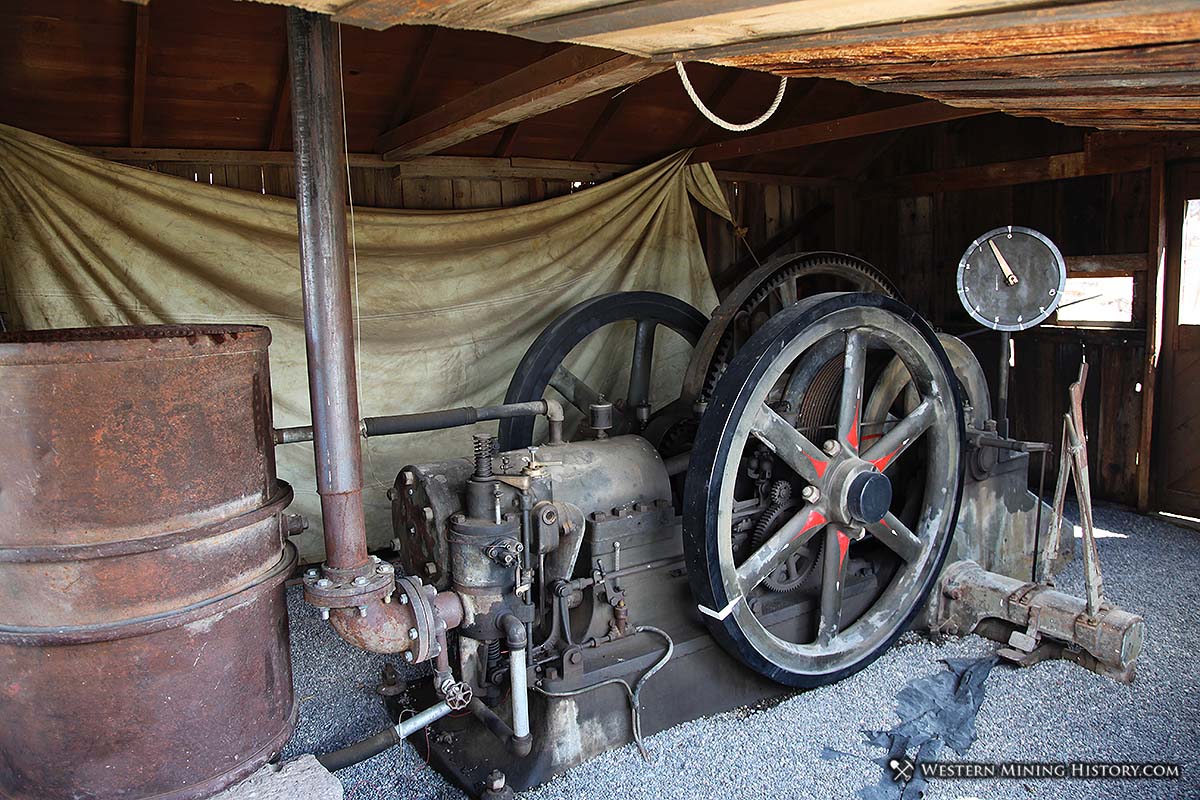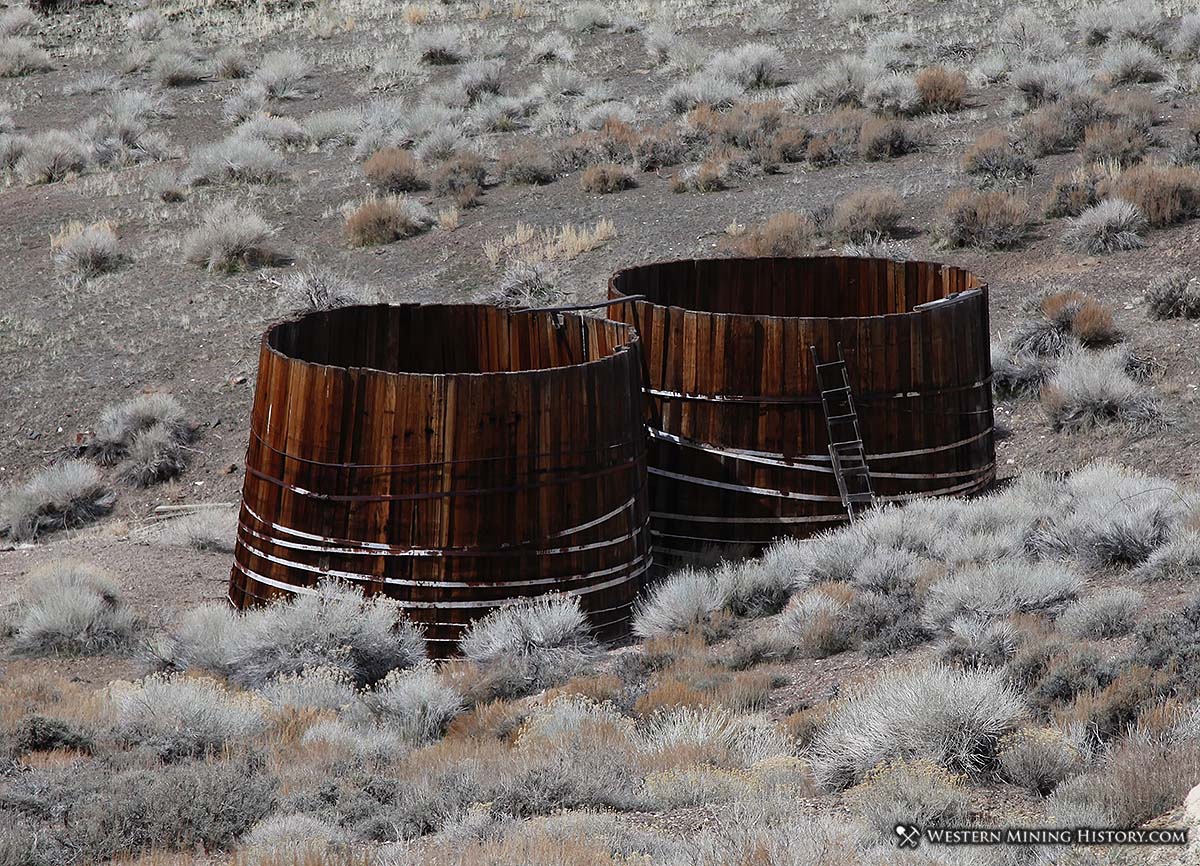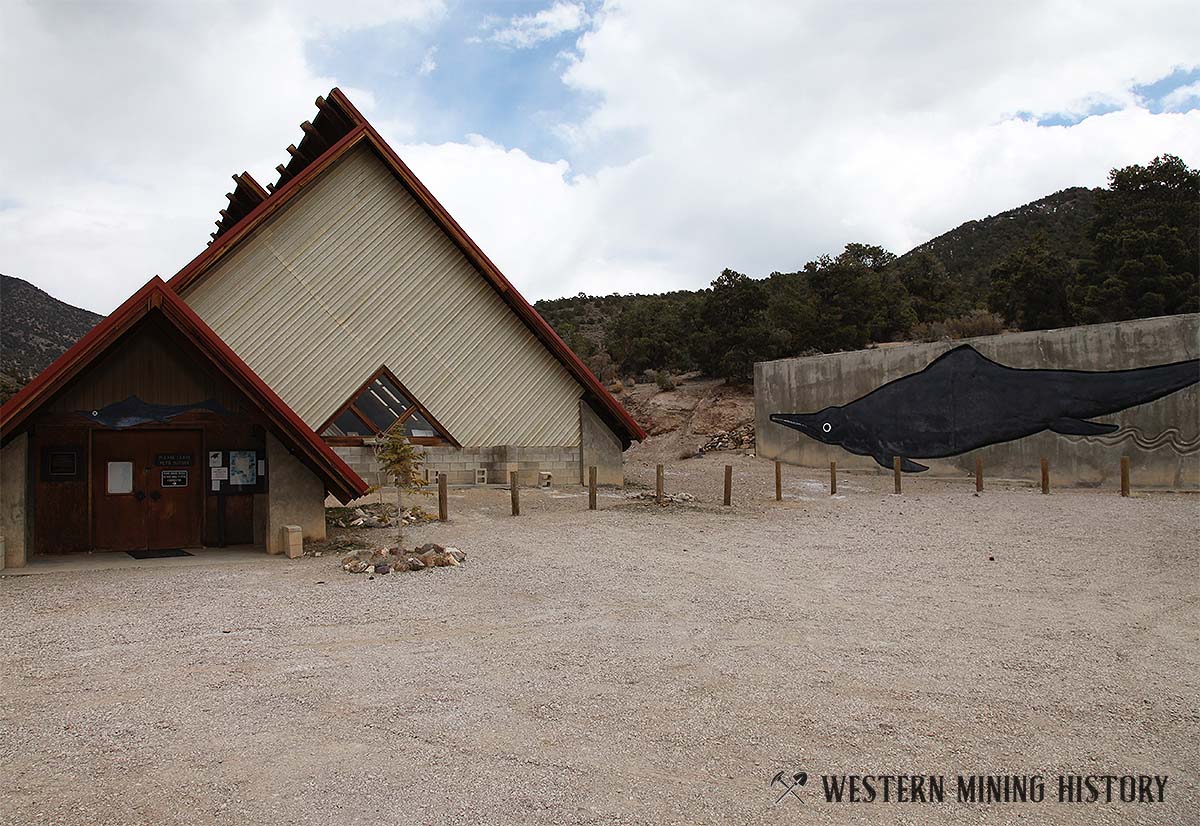Click on an image to get more details or a direct link.
Mine Superintendent's Home - Berlin, Nevada
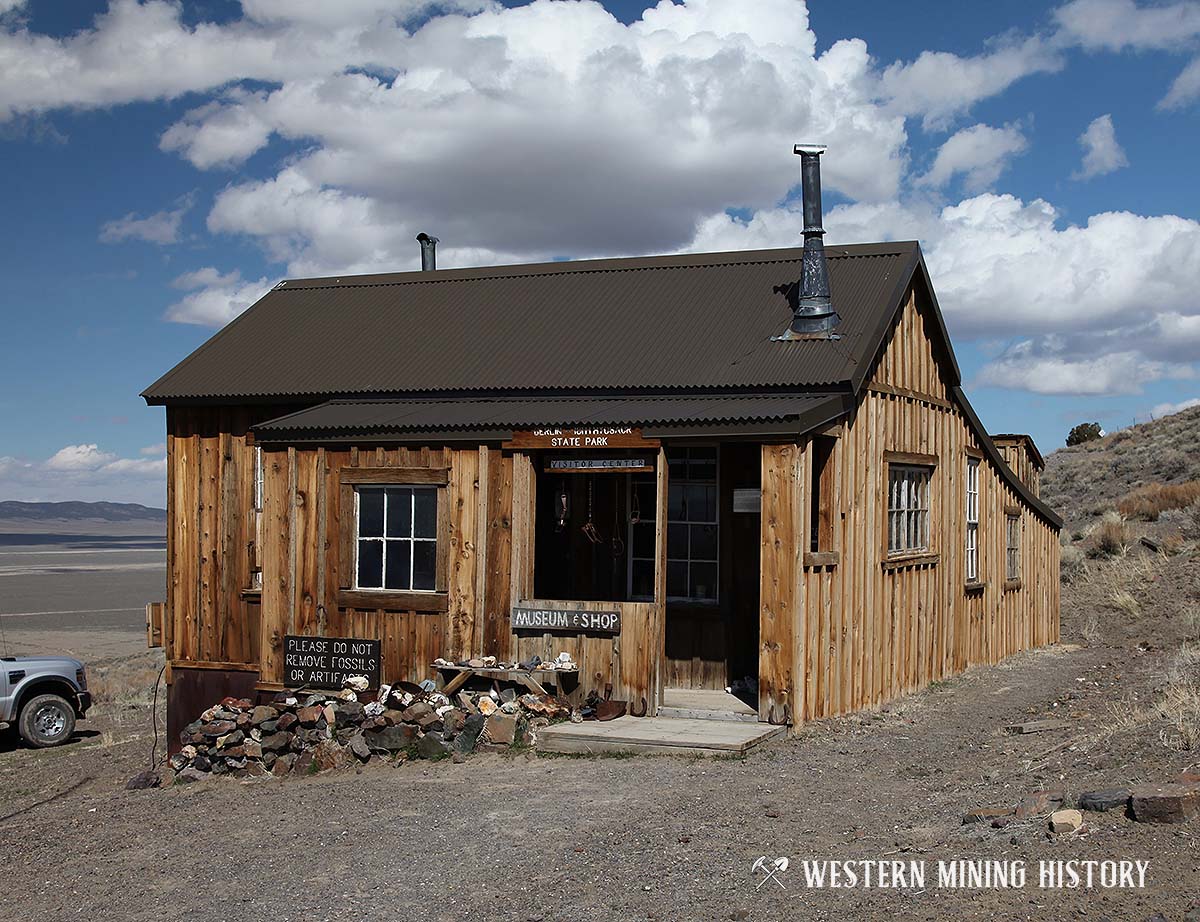
Mr. Bowen, the mine superintendent, believed in dealing with his fellow men with justice and understanding, but he could not be deterred from administering his duties for the company conscientiously.
In 1907, when the miners struck for a raise in pay from $3.50 to $4.00 per day, and the values in the ore were too low to grant the raise and continue operation of the property at a profit, he shut down the mine.
The miners reasoned that if he was out of the way, their chances for obtaining the raise would be enhanced. They escorted him to the bottom of the hill and told him to keep going.
During the night, he walked back to Berlin, and without being noticed, hitched up the company owned team and buggy. He then drove to Tonopah and returned in a few days with the sheriff and regained control of the property.
Machine Shop - Berlin, Nevada
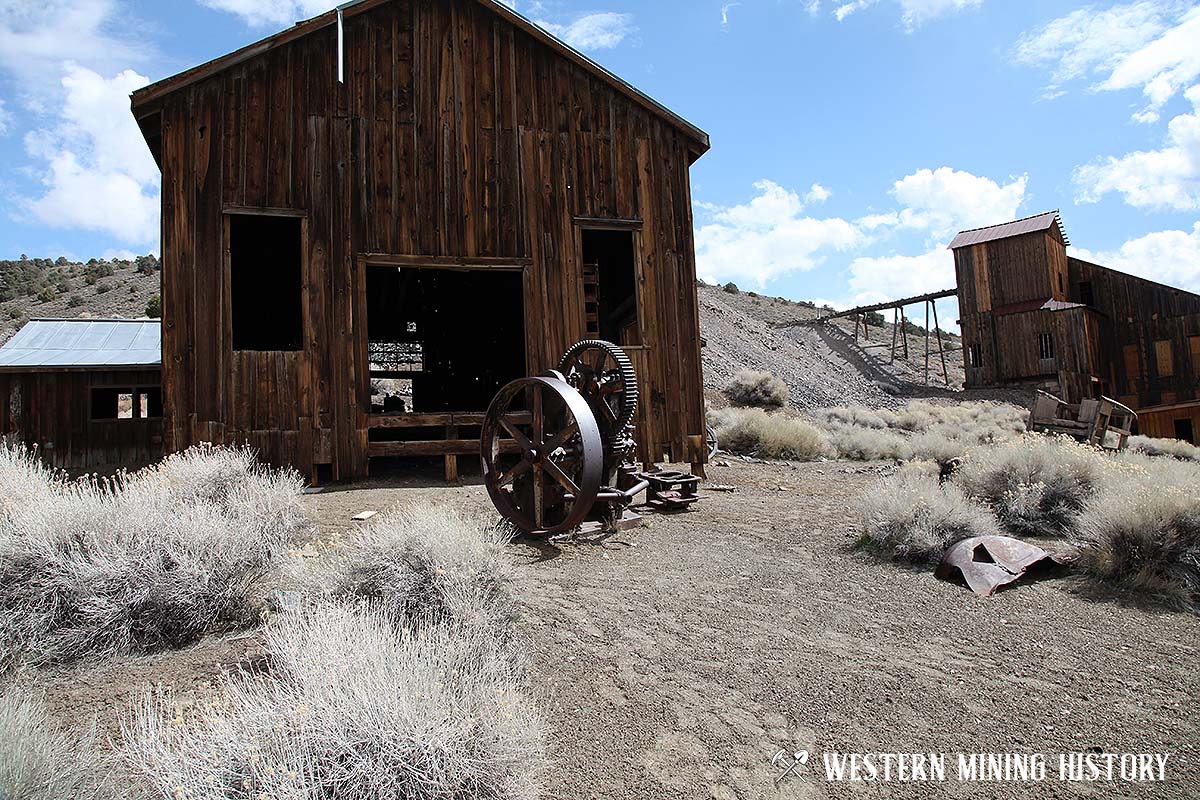
This building contained the blacksmith shop, and was equipped with power driven drill presses, and lathes, etc. Therefore, it was called the machine shop. The crew of mechanics that worked here kept all the mine and mill machinery running smoothly.
Occasionally a passing automobile that had broken down was towed to its door to be put into running condition again.
Stage Station - Berlin, Nevada

The stage driver and his horses were housed under one roof in this building. A partition made of lumber separated the dwelling section from the barn. A small corral was attached to the south section and the door leading into the barn could be closed in cold weather.
The men who drove stage from 1904 until 1924 were John Mullin, Ed Dieringer and Alex Dyer. Alex used horses until 1915. On his first trip by Model T, the car quit him at the Dierenger Ranch. He caught a ride into Ione for help, and Albert Mayette and Firmin Bruner drove him back to his car and got it started.
Inside the assay office - Berlin, Nevada

Photo taken through the cloudy window of the building.
Samples of rock and ore from the mine and samples of concentrates from the mill were processed (assayed) here to determine the amount of values they contained. The furnace in this assay laboratory used charcoal because it was the only clean burning fuel produced locally.
The night watchmen used this office to warm himself and to rest in after each trip through town on lookout for thieves and fires. He also ate his midnight lunch here. The watchman's name was Mr. Doolan.
Inside the Berlin Mill
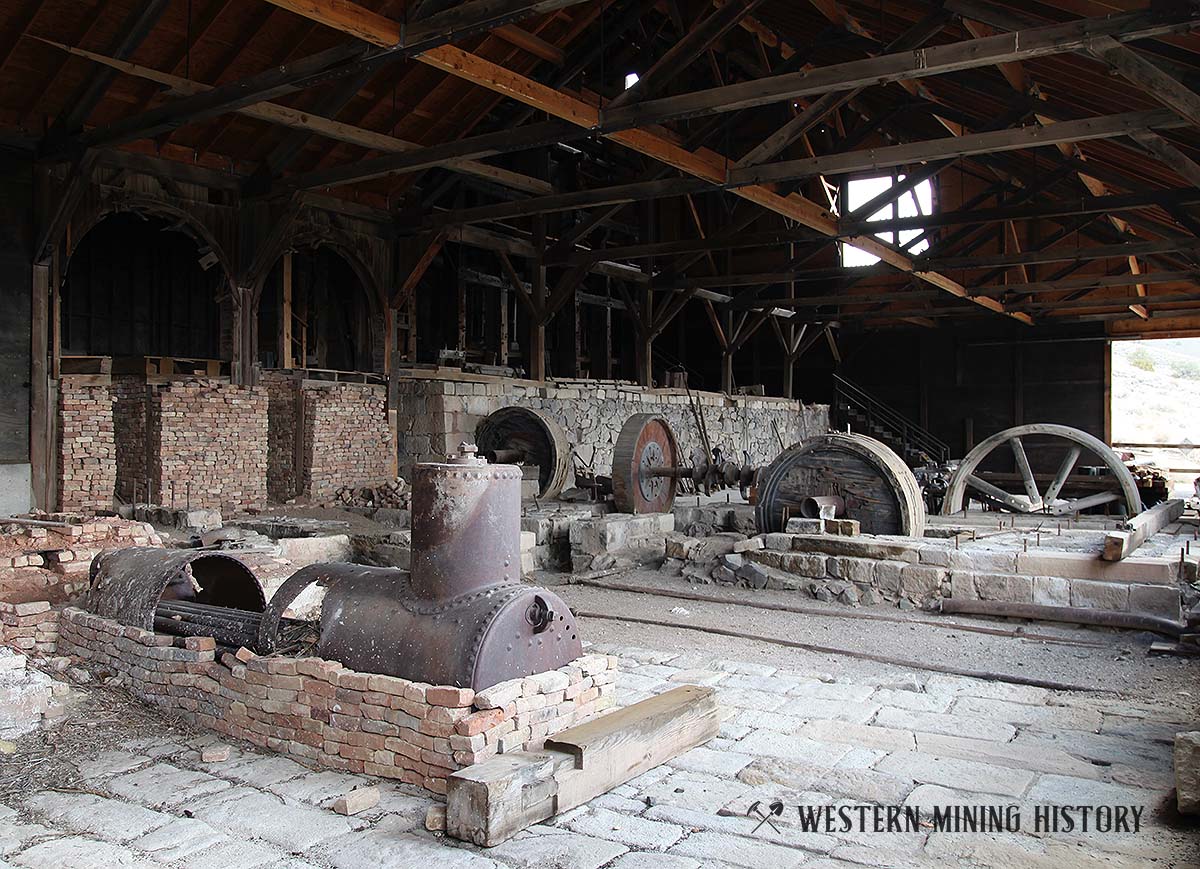
This building was a beehive of activity while Berlin was in its heydey.
One man tended to the primary crusher and did other odd jobs, another tended the 30 stamps and the concentration tables, and a third man fired the five boilers and looked after the four steam engines. One engine powered the primary crusher and the stamps, another powered the concentrating tables, the third drove the direct current dynamos that supplied electricity for lights, and the fourth engine was combined with a compressor that furnished air to run the drilling rigs and pumps in the mine.
The area between the mill, machine shop and boarding house was piled high with cord wood used to fuel the boilers. Mine rail tracks were laid between the long piles of wood and flat rack trucks rolled on the tracks to bring wood close to the boilers.
Schweble's Prospect - Berlin Nevada
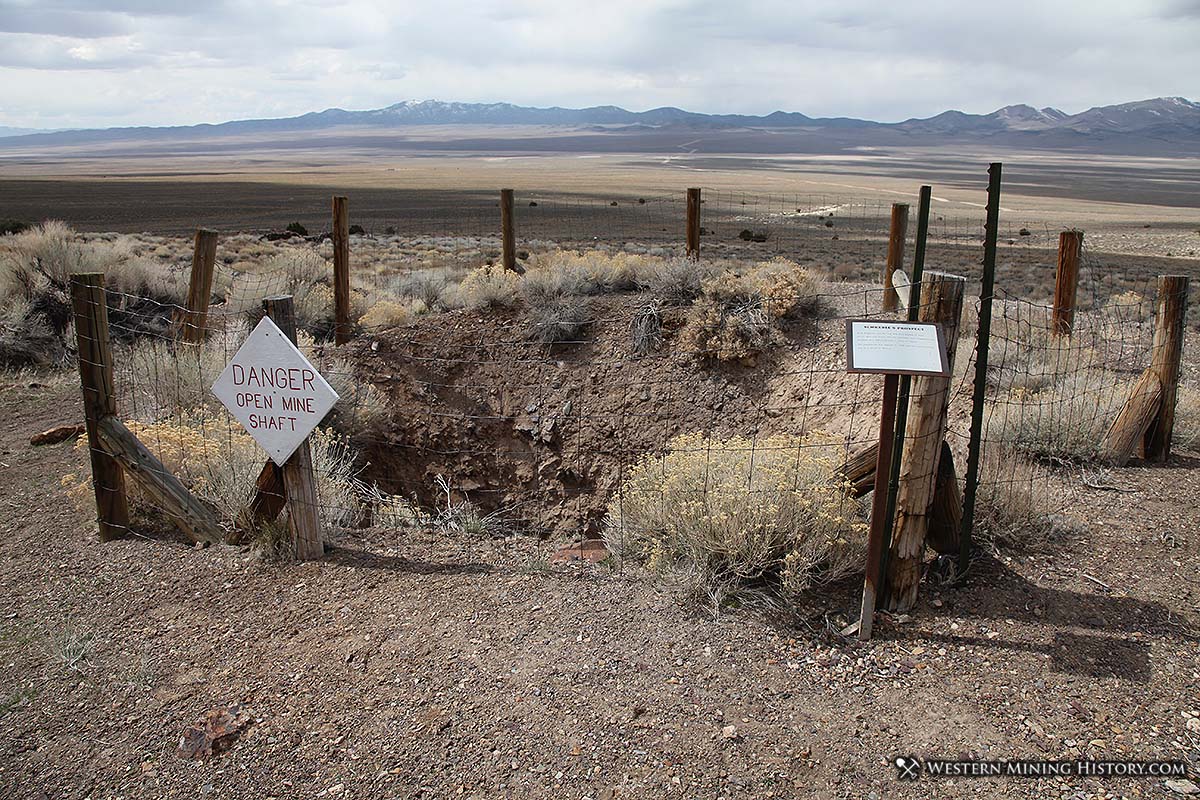
Jack Schweble and his son dug here hoping to find placer gold and silver, but the pannings were disappointing because they indicated only trace values. The excavation was started in 1932 and was subsequently dug to a depth of 90 feet.
Text from a historical marker.
Mine Privy - Berlin, Nevada

Over this walled pit stood a large privy. It was not the deluxe type featuring multiple holes. In fact, it had no holes at all. Instead a wood rail extended from one end to the other, on which a group could sit and balance their weight while they pondered, not too comfortably.
Text from a historical marker.
